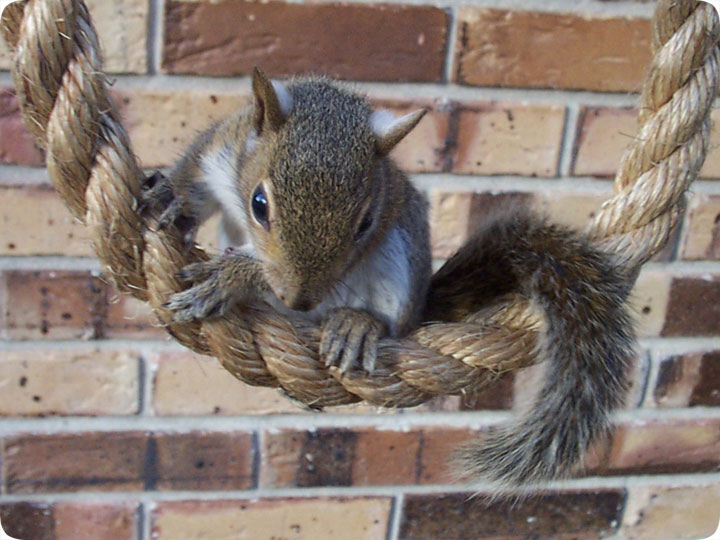-
info@aaanimalcontrol.com
Call us for help in your town
Humane Wildlife Education
Squirrel on a Rope

Sisal rope is a good tool for removing squirrels from chimneys. I carry a few lengths of it with me at all times, and I weight the end with large lead fishing weights. It's a common problem here in Florida for squirrels to fall down chimneys. This is normally not a problem in most parts of the country, where chimney flues are made of brick or even concrete or plaster. Squirrels can climb just about anything. But in Florida, most of the chimneys are made of slick steel tubes, and if a squirrel falls down such a chimeny, it cannot climb out. In such cases, if I am unable to reach the squirrel, I simply lower the rope down the chimney and wait until the metal weights hit the bottom, and I wait for the squirrel to climb out on its own.
Oddly, squirrels can be very stubborn in such cases. I don't know if it's fatigue or learned helplessness, but many times they won't climb up the rope to freedom. I once lowered a rope and then went into the fireplace and opened the damper and looked up, and the squirrel was just clinging to the rope, a few feet up, but it refused to climb out. It didn't even bother to do so for several hours. But it eventually went.
However, I have had two cases in my life in which the squirrel never climbed, for whatever reason, and it died instead. How strange! I've encountered many cases of stubborn squirrels that won't leave open traps, won't exit once I've cut a hole in a wall for them to craw out of, etc. They often just make a whining noise. To be honest, since I've started working with wild animals, I've started liking squirrels less and less. They are very agile and often cute like the one above, but they can be dumb.
Do it yourself: Visit my How To Get Rid of Squirrels page for tips and advice.
Get professional help: Visit my Nationwide Pro Directory of wildlife removal experts.
The Eastern Gray Squirrel (Sciurus carolinensis), is one of the most widespread nuisance animals in the country. It lives throughout most of the United States. It is arboreal (likes to live in trees), but just as commonly atticeal (likes to live in attics). It's a member of the rodent family, and is prone to chewing and gnawing. Squirrels are active during the daytime, particularly morning and evening. They are active year-round. They give birth to two litters of young per year, in late summer and late winter, commonly inside buildings they've chewed into. They are very agile and great climbers, and are active animals. They are cute, but often destructive, especially when they enter an attic.
For more wildlife stories, click my Wildlife Blog, or click my below banner to hire a local trapper.





















